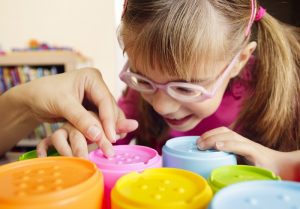
With non-verbal gestures, children with special needs can more easily communicate specific ideas, needs, and emotions.
While non-verbal communication is a crucial tool for both children and adults alike, it is especially critical for individuals who experience communicative limitations. For children with special needs, nonverbal communication is an essential means of understanding, communicating, and building narratives. Although you may already know that nonverbal communication is an important aspect of communication as a whole, consider the many benefits of using nonverbal communication for children with special needs in everyday life.
Nonverbal Communication Enables Children to Communicate Specifics
With non-verbal gestures, children with special needs can more easily communicate specific ideas, needs, and emotions. By encouraging the use of gestures to communicate beyond simple greetings, children with special needs can also communicate more easily without frustration and misunderstandings caused by physical limitations that may affect their speech.
Nonverbal Communication Can Enrich Vocabulary
In pairing verbal communication with gestures or other forms of nonverbal communication, children will not only be able to communicate more easily, but they will also be able to expand their vocabulary and understanding of grammar. Combining words and gestures allows for the building of vocabulary association, as well as the strengthening of their ability to build narratives.
Nonverbal Communication Can Indicate Developmental Delays and Challenges Early
While there are many things that you may learn about your child through verbal communication, nonverbal communication may serve as an even better indicator of any developmental delays or challenges. Limitations with producing gestures may be indicative of other challenges that should be addressed at an early age.
Nonverbal Communication Can Indicate Development of Speech
Not only is nonverbal communication an excellent tool for a child to communicate with, but it can also be an effective indicator of speech development in the future. Paying close attention to your child’s frequently used gestures or attempts to verbally identify an object could allow you to predict which words will develop as a part of their speech later on.
The Connections Therapy Center
The Connections Therapy Center serves families of children and adolescents with disabilities and special needs. We are a team of experts in the fields of pediatric speech, occupational therapy, speech-language pathology, and behavioral sciences. As a team, we offer intensive hands-on therapy for children and adolescents, as well as informative and useful resources for families. If you are interested in learning more about what we can do to help your family, visit us online or give us a call at (202) 561-1110 (Washington, D.C. office) or (301) 577-4333 (Lanham office). Want to get more information on how to help your child thrive? Follow us on Facebook, Twitter, LinkedIn, Google+, and Pinterest.
